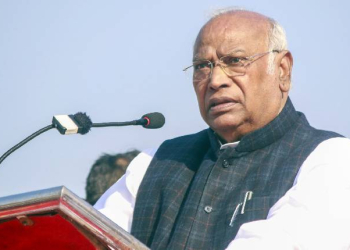New Delhi:As the 27th Conference of Parties in Egypt comes to an end, it becomes all the more necessary to assess the status of bilateral and multilateral cooperation in climate action.
Positive and tangible action towards reduction in greenhouse gas emissions and the carbon footprint have now become the need of the hour. The world is, at this point, witnessing the brunt of years of negligence of global warming to an unprecedented level. This realisation at the state and community level has brought the question of climate action to the forefront once again.
With summits like COP27 criticised for being inconclusive, it becomes very important for states to engage in bilateral cooperation to develop the technical and legal infrastructure needed for a smooth transition to renewable energy sources, which is a significant step towards a reduction in carbon footprints.
The two powerful democracies of the Indo-Pacific, India and Australia have been diversifying their partnership to include issues of global concern and climate change must take priority in the list. The renewed interest in partnership over critical minerals for environment-friendly technological development is one aspect of it.
During the months ahead of the COP27, India has reiterated the commitments towards achieving the net zero target by 2070 and had also approved an updated plan to reduce the carbon emissions by 25 per cent by 2030. This is an important step forward in the bid to create a tangible action plan.
While the international negotiations over climate action are generally mired by the debate between the ‘developed’ and the ‘developing’, questioning the principle of ‘common but differentiated responsibilities’, Australia has often found itself at the centre of this tightrope walk.
Its commitment, however, to reduce the carbon emissions by 43 per cent by 2030 shows that there is an increased awareness to contribute to the climate action framework. The fact that both India and Australia have set the same time frame for achieving their respective targets suggests the scope of cooperation in the process as well.
A budding partnership
It has been previously acknowledged that, among other areas, India and Australia could also mutually benefit from a robust involvement in the climate action sphere. It was last year that the two nations jointly agreed on partnership over low emissions technology as well as a low cost solar programme. This is likely to become an integral part of the overall economic ties that the two countries share.
Building on these commitments, a letter of intent was also signed earlier this year between the two countries to cooperate effectively on the development of new and renewable energy technology as a part of the fourth India-Australia Energy Dialogue.
The recently-signed Economic Cooperation and Trade Agreement (ECTA) would further facilitate the sharing of low emissions technological resources, as well as the critical minerals that play an important part in transitioning towards a net zero target.
The need for increasing cooperation in climate action is highlighted best by Dr. Robert Glasser of the Australian Strategic Policy Institute (ASPI) says that “we assume a set pace of change for the future but the pace is increasing much more rapidly than people realise” while addressing the impacts of climate change.
Green Hydrogen
There is immense potential of cooperation between the two nations when it comes to the extraction, investments as well as research and developments of critical minerals like lithium, nickel as well as green hydrogen and other rare earth minerals. Australia has a vast reservoir of not just lithium but green hydrogen as well. India could tap on to the economic investments that the Australian state is willing to make on the commercial production of green hydrogen over the period.
Why is green hydrogen so important?
To put it in simplest terms, green hydrogen makes the use of renewable energy sources such as wind and solar energy. This is the hydrogen that is produced by splitting water into oxygen and hydrogen elements by using electricity produced through wind or solar energy. This makes it clear that all the resources involved in the production of green hydrogen are renewable, i.e. water, solar energy, and the wind.
It may be more beneficial for the environment to use green hydrogen for industrial production purposes but it is also very realistic to assume that there needs to be a greater level of investments in the research of this resource. The technological know-how to develop this resource at a wide scale would involve not just the technical aspect but also a vast and consistent body of academic research.
This is where the opportunity for strong bilateral cooperation arises. There is a vast potential of development of green hydrogen in Australia and India can become a market for this resource. As the cooperation grows in terms of the critical mineral industry, the production of green hydrogen can be a resource that both countries can together tap.
Navigating the impact of climate change
Cooperation in terms of climate change need not always be in technology and research, it is a known fact that the global effects of climate change have also led to a humanitarian crisis.
The vast scale of displacements of communities triggered by the effects of climate change has led to the need for state level and international intervention in their rehabilitation. There needs to be developed a robust mechanism of aid for the communities and bilateral cooperation can become an important asset in this regard.
As Dr Glasser notes, India has a significantly developed capacity for disaster risk reduction and prevention of high casualties in case of floods and cyclones especially. This can become another important breakthrough in the rapidly strengthening relationship between the two countries. Cooperating together on navigating the negative impacts of climate change would also become very beneficial at the very grassroots of the Indian and Australian communities as it would assist the vulnerable communities on both sides.
It may be very clear that there are a plethora of ways as to how India and Australia can increase their cooperation and develop a mutually beneficial climate action framework. Already committed to building their relationship further, cooperation on green technologies, critical and rare earth minerals can make the India-Australia alliance even stronger.
(IANS)





















